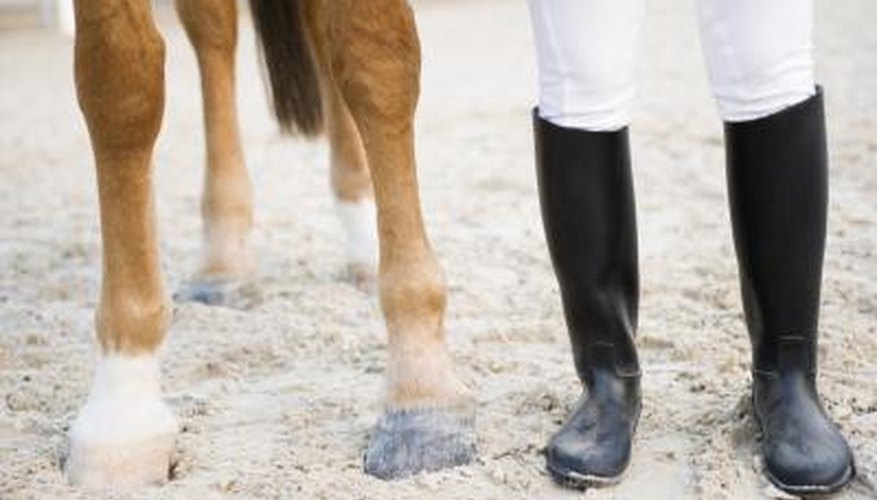Splints are strains to the ligaments that run between the cannon bone and the splint bones in the horses legs. Injury, strain or trauma to these ligaments will cause them to inflame and pop outward. This is when you see the visible splint. Popped splints can have various degrees pain that will affect a horse. The pain usually depends on the location of the splint on the horse's leg, the size of the splint, degree of heat, and how soft the splint is. Younger horses are more prone to pop splints.
Feel the splint that has popped for size, location, heat, softness and tenderness. A large, soft, hot, tender splint is the freshest most painful splint. The closer they are to a joint, such as their knee, the more painful that splint can be. Your goal is to get that splint smaller, firm, cool and not sensitive to the touch.
- Splints are strains to the ligaments that run between the cannon bone and the splint bones in the horses legs.
- Your goal is to get that splint smaller, firm, cool and not sensitive to the touch.
Cold hose your horse's leg, directly on the popped splint, for at least 20 minutes twice a day. You will need to do this every day until the splint is no longer hot and until it has hardened up quite a bit.
Poultice your horse's leg, most importantly over and around the popped splint. When you poultice your horse's leg, distribute the poultice as evenly as possible in a thin yet not transparent film.
- Cold hose your horse's leg, directly on the popped splint, for at least 20 minutes twice a day.
- Poultice your horse's leg, most importantly over and around the popped splint.
Cut the paper bag into the same shape as the bandage quilt. Then soak the paper bag in cold water, shake it off and wrap your horse's poulticed leg with the wet paper.
Wrap your horse's leg with the standing wrap immediately after you wrap the wet paper bag over the poultice to help the paper bag stay up on your horse's leg. Wrap the opposite leg with a regular standing wrap to help support the other leg.
Poultice and wrap your horse's leg in this manner until the heat and inflammation has come out of the splint. It needs to be done on a daily basis after the leg is hosed.
- Poultice and wrap your horse's leg in this manner until the heat and inflammation has come out of the splint.
Use the DMSO by painting it on the splint and wrapping the leg after the heat has come out of the splint. Your veterinarian can give our DMSO infused with pain relieving substances if the splint is still sore. The DMSO and then wrapping the leg will help calm inflammation, reduce the size and help harden the splint.
Consult your veterinarian about alternative methods to help your horse's splint if the pain and inflammation does not subside after a month with the preceding treatments. Veterinarians can inject the splint, refer you to someone who can freeze fire it or perhaps prescribe more time off.
TIP
Be patient and diligent when treating a popped splint.
WARNING
Consult a veterinarian if you have any questions or if the splint seems extremely painful.
